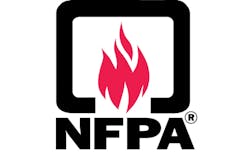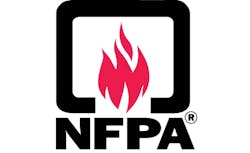NFPA announces launch of the Ecosystem Assessment Tool
August 4, 2021 – The NFPA Fire & Life Safety Policy Institute announced the launch of the Ecosystem Assessment Tool that will help users identify gaps in a community’s capacity to support safety and draw on the results to advocate for specific changes that will better protect citizens and property. It is designed for professionals and practitioners responsible for building, electrical, and life safety including fire officials, building code enforcers, emergency managers, and policymakers, and is available in English, Spanish, and Arabic languages.
In the last decade, a number of tragic U.S. and international life safety incidents have put a spotlight on safety systems that repeatedly fail to protect the public and first responders. These incidents represent failures of the Fire & Life Safety Ecosystem™, a framework NFPA developed in 2018 that identifies the eight components that must work together to minimize risk and help prevent loss, injuries, and death from fire, electrical, and other hazards. Because breakdowns in one or more of the components are often revealed after a fire or life safety event occurs, the Ecosystem Assessment Tool gives communities the opportunity to revisit their safety practices before weaknesses in the system lead to tragedies.Across the globe, communities differ in size, economic conditions, and governance structures. Through the user’s answers to a series of questions about the Ecosystem components, the tool is intended to shed light on gaps in safety systems regardless of the particular characteristics of a community. Upon completing the assessment, the user receives a score that rates the community as poor, fair, good, or excellent in its approach to safety. Provided with the score is a detailed breakdown for each Ecosystem component to help identify specific gaps that should be addressed.
“In today’s society, our changing infrastructure, new technology, evolving risks, and competing priorities all put pressure on maintaining strong fire and life safety protections,” said Meghan Housewright, director of the NFPA Fire & Life Safety Policy Institute. “The Ecosystem Assessment Tool gives communities the opportunity to see how well prepared they are to face disasters and what they need to do to help address fractures in their own fire and life safety ecosystems to create safer areas to live and work.”
While progress has been made in the last few decades regarding the fire problem, fire safety continues to lag behind other societal concerns that are often deemed more pressing. The Fire & Life Safety Ecosystem calls for a culture of best practices and accountability and serves as the blueprint for rebuilding our global safety infrastructure. Access the free Ecosystem Assessment Tool at nfpa.org/ecosystemtool.
More information about the NFPA Fire & Life Safety Ecosystem, including the new 2020 Ecosystem Year in Review report, videos, articles, reports and fact sheets, is available at nfpa.org/ecosystem.
For this release and other announcements about NFPA initiatives, research, and resources, please visit the NFPA press room.
NFPA: 125 Years of Protecting People and Property
The National Fire Protection Association® (NFPA®) is a global self-funded nonprofit organization devoted to eliminating death, injury, property, and economic loss due to fire, electrical, and related hazards. The association began its work to solve the fire problem in a young, industrialized nation in 1896 and has since become a global force known for advancing safety worldwide. NFPA delivers information and knowledge through more than 325 consensus codes and standards, research, training, education, outreach, and advocacy; and by partnering with others who share an interest in furthering the NFPA mission. In celebration of its 125th Anniversary, NFPA will be hosting a Conference Series and other initiatives that reflect the association’s steadfast commitment to advancing fire and life safety for the next 125 years and beyond. For more information or to view NFPA codes and standards for free, visit www.nfpa.org.

